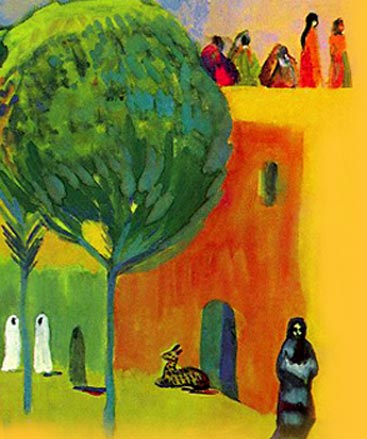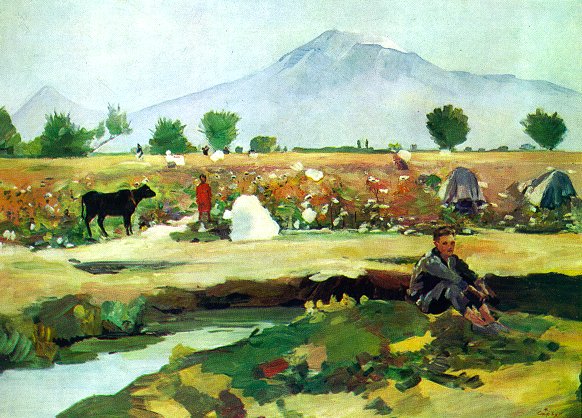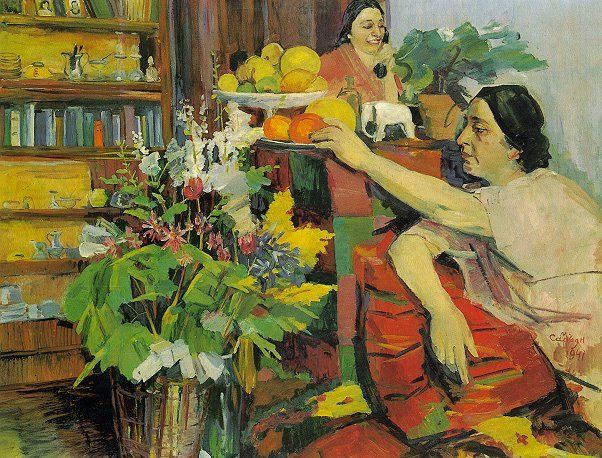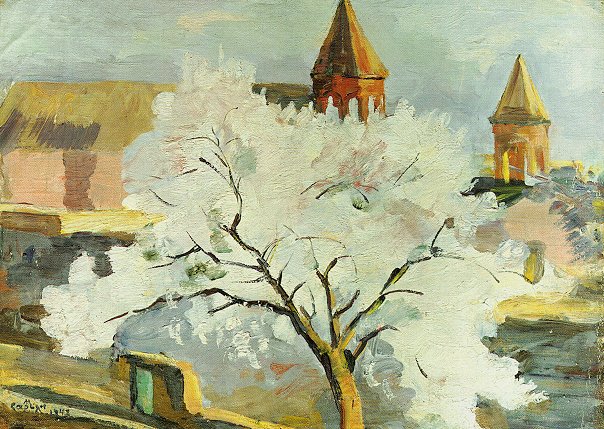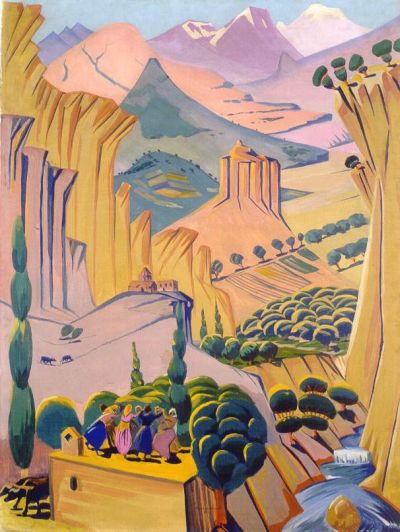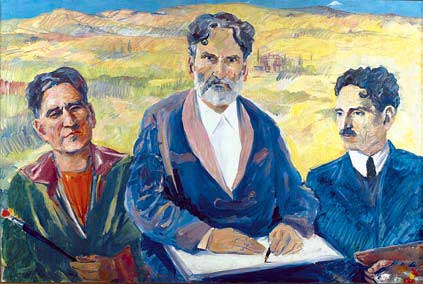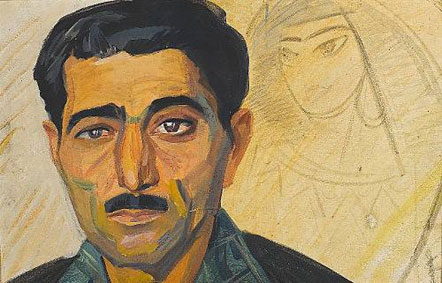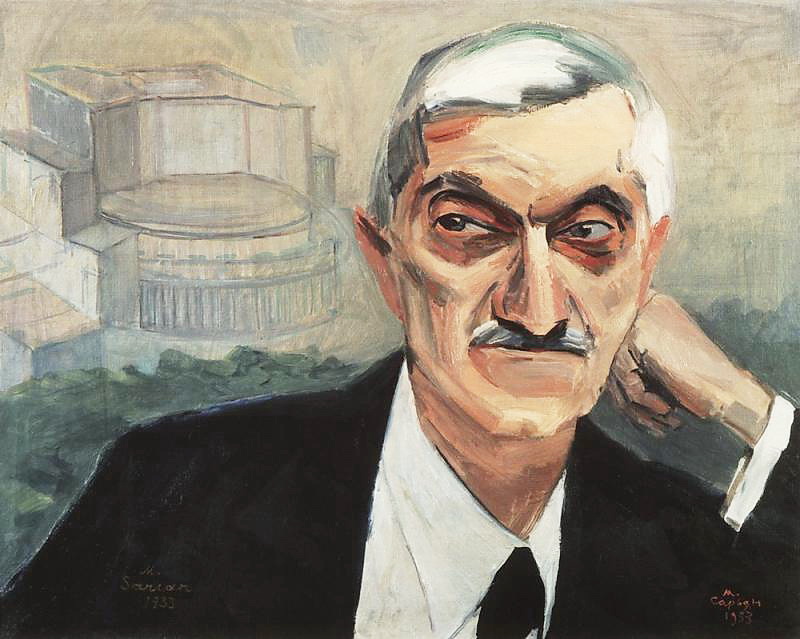<Back to Index>
- Painter and Architect Vladimir Yevgraphovich Tatlin, 1885
- Painter Martiros Saryan, 1880
PAGE SPONSOR
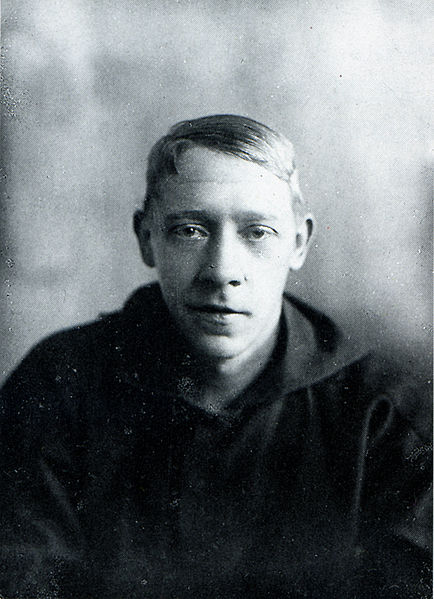
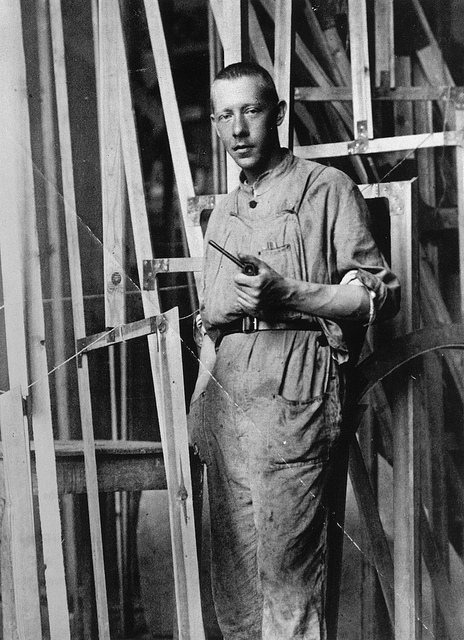
Vladimir Yevgraphovich Tatlin (Russian: Влади́мир Евгра́фович Та́тлин) (December 28 [O.S. December 16] 1885 – May 31, 1953) was a Russian and Soviet painter and architect. With Kazimir Malevich he was one of the two most important figures in the Russian avant garde art movement of the 1920s, and he later became an important artist in the Constructivist movement. He is most famous for his attempts to create the giant tower, The Monument to the Third International.
Tatlin was born in Moscow, Russian Empire, the son of a railway engineer and a poet. He worked as a merchant sea cadet and spent some time abroad. He began his art career as an icon painter in Moscow, and attended the Moscow School of Painting, Sculpture and Architecture. He was also a professional musician - bandurist, and performed as such at the Paris World Fair in 1906.
Tatlin achieved fame as the architect who designed the huge Monument to the Third International, also known as Tatlin's Tower. Planned in 1920, the monument, was to be a tall tower in iron, glass and steel which would have dwarfed the Eiffel Tower in Paris (the Monument to the Third International was a third taller at 1,300 feet high). Inside the iron - and - steel structure of twin spirals, the design envisaged three building blocks, covered with glass windows, which would rotate at different speeds (the first one, a cube, once a year; the second one, a pyramid, once a month; the third one, a cylinder, once a day). High prices prevented Tatlin from executing the plan, and no building such as this was erected in his day.
Tatlin was also regarded as a progenitor of Russian post - Revolutionary Constructivist art with his pre - Revolutionary counter - reliefs — structures made of wood and iron for hanging in wall corners. He conceived these sculptures in order to question the traditional idea of painting, though he did not regard himself as a Constructivist and objected to many of the movement's ideas. Later prominent constructivists included Varvara Stepanova, Alexander Rodchenko, Manuel Rendón Seminario, Joaquín Torres García, Laszlo Moholy - Nagy, Antoine Pevsner and Naum Gabo.
Although colleagues at the beginning of their careers, Tatlin and Malevich quarreled fiercely and publicly at the time of the 'Zero - Ten' (0.10) exhibition in 1915 (long before the birth of Constructivism), also called "the last futurist exhibition", apparently over the 'suprematist' works Malevich exhibited there. This led Malevich to develop his ideas further in the city of Vitebsk, where he found a school called UNOVIS (Champions of the new art).
Tatlin also dedicated himself to the study of clothes, objects and so on. At the end of his life he started to research bird flight, in order to pursue one of the great dreams of humanity: to fly.
Tatlin was buried at the Novodevichy Cemetery in Moscow.
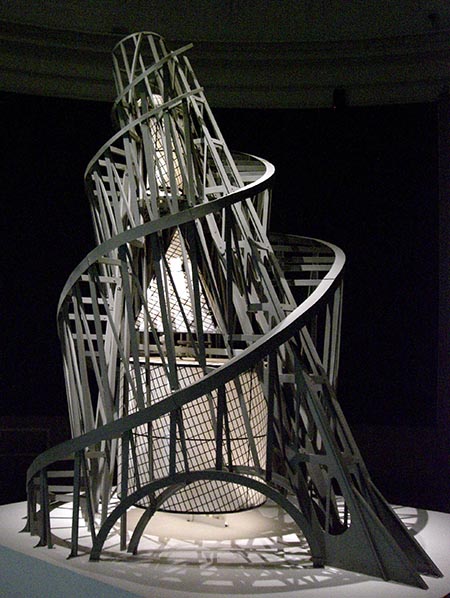
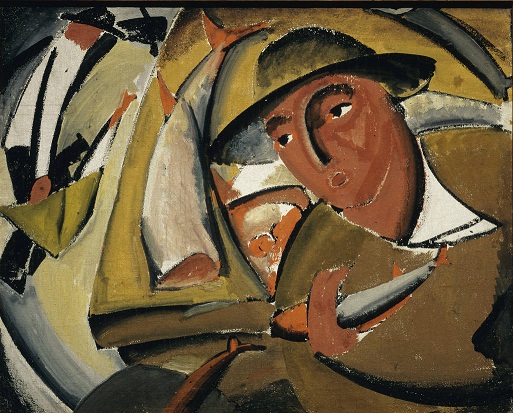
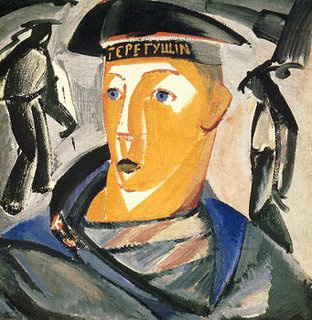
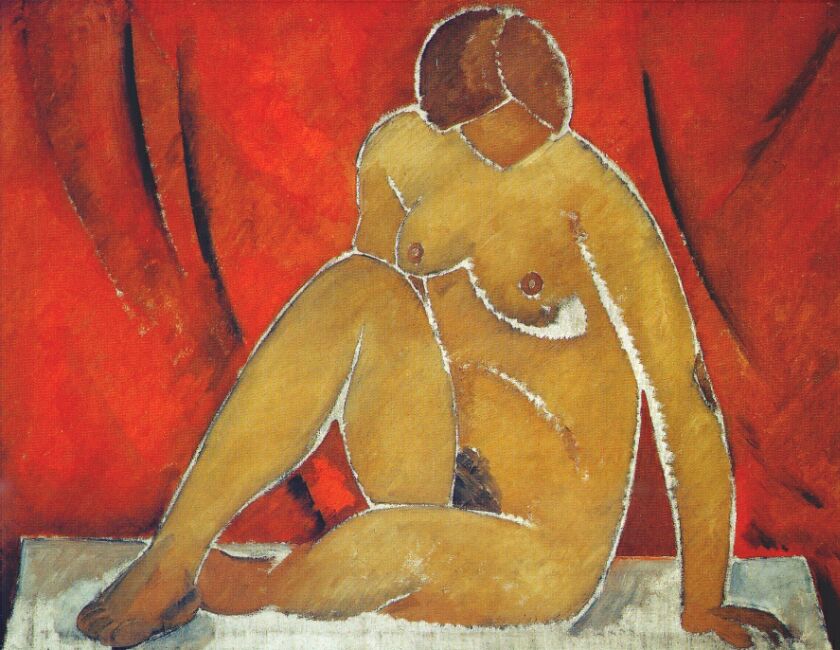
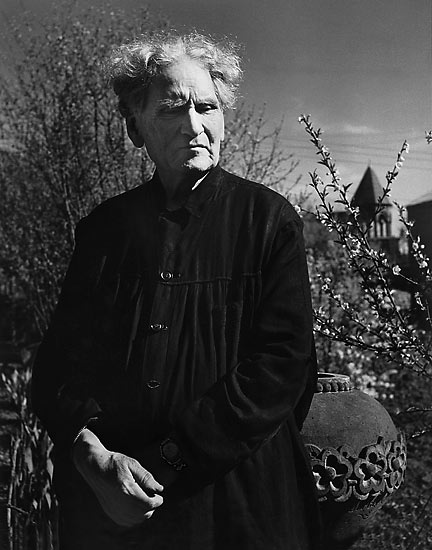
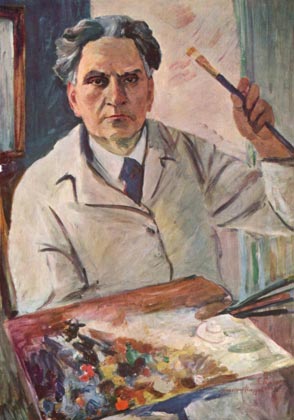
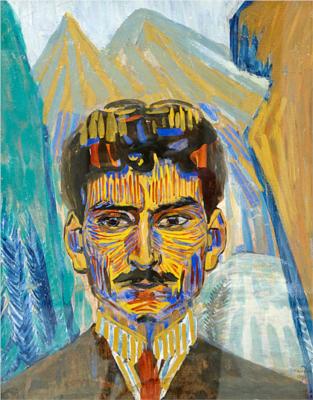
Martiros Saryan (Armenian: Մարտիրոս Սարյան) (28 February [O.S. 16 February] 1880, Nor Nakhichevan, Russian Empire — 5 May 1972, Yerevan, Armenia) was an Armenian painter.
He was born into an Armenian family in Nor Nakhijevan (now part of Rostov - on - Don, Russia). In 1895, aged 15, he completed the Nakhichevan school and from 1897 to 1904 studied at the Moscow School of Arts, including in the workshops of Valentin Serov and Konstantin Korovin. He was heavily influenced by the work of Paul Gauguin and Henri Matisse. He exhibited his works in various shows. He had works shown at the Blue Rose Exhibit in Moscow.
He first visited Armenia, then part of the Russian Empire, in 1901, visiting Lori, Shirak, Echmiadzin, Haghpat, Sanahin, Yerevan and Sevan. He composed his first landscapes depicting Armenia: "Makravank," 1902; "Aragats," 1902; "Buffalo. Sevan", 1903; "Evening in the Garden," 1903; "In the Armenian village", 1903, etc. which were highly praised in the Moscow press.
From 1910 to 1913 he traveled extensively in Turkey, Egypt and Iran. In 1915 he went to Echmiadzin to help refugees who had fled from the Armenian genocide in the Ottoman Empire. In 1916 he traveled to Tiflis (now Tbilisi) where he married Lusik Agayan. It was there that he helped organize the Society of Armenian Artists.
After the Bolshevik seizure of power in 1917 he went with his family to live in Russia. In 1921 they moved to Armenia. While most of his work reflected the Armenian landscape, he also designed the coat of arms for Armenian SSR and designed the curtain for the first Armenian state theater.
From 1926 - 1928 he lived and worked in Paris, but most works from this period were destroyed in a fire on board the boat on which he returned to the Soviet Union.
In the difficult years of the 1930s, he mainly devoted himself again to landscape painting, as well as portraits. He also was chosen as a deputy to the USSR Supreme Soviet and was awarded the Order of Lenin three times and other awards and medals. He was a member of the USSR Art Academy (1974) and Armenian Academy of Sciences (1956).
Saryan died in Yerevan on 5 May 1972. His former home in Yerevan is now a museum dedicated to his work with hundreds of items on display. He was buried in Yerevan at the Pantheon next to Komitas Vardapet.
Nature's ways are wonderful and unfathomable. The grain swells in the soil, the sprout grows and flowers when the time comes and then it bears new fruit and so does not die. We are like grain. We never die because we are One with Nature. To understand this is to comprehend Immortality — the Apotheosis of the Human Race. It is with this conviction that I have lived my Life. My Life is a store of my experience, a Life of aspirations, sorrows, joys and triumphs. (M. Saryan)
Life is an island. People come out of the sea, cross the island, and return to the sea. But this short life is long and beautiful. In getting to know nature man exalts the wonder and beauty of life (M. Saryan)
